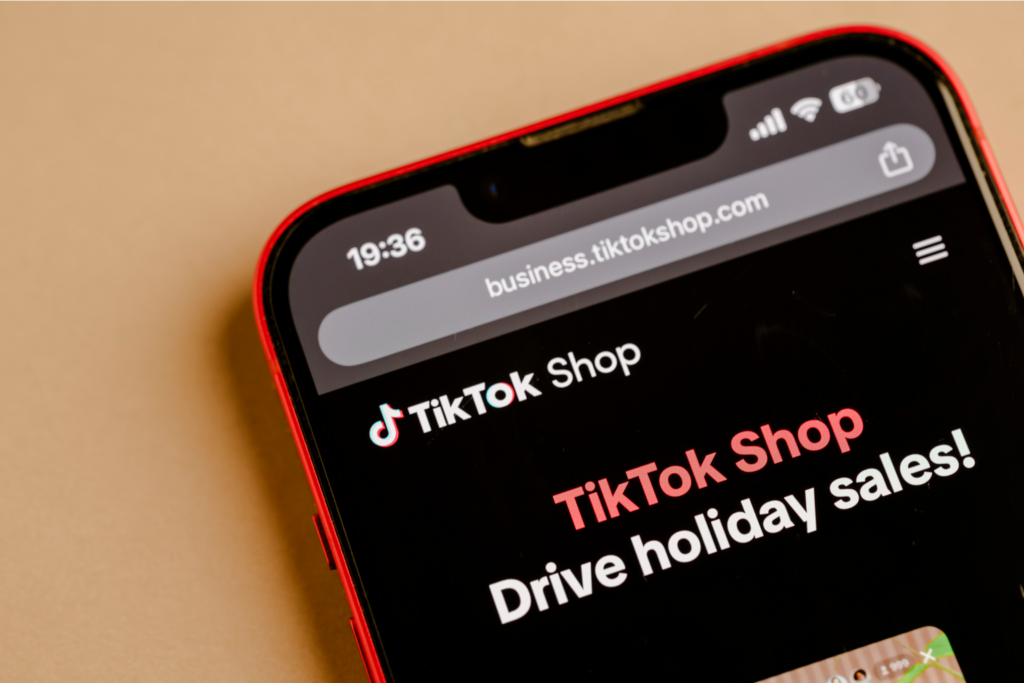Create a custom shirt with Printify
Once you’ve set up an online store, it’s time to price your t-shirts to attract customers while making a high enough profit. This article will help you plan a t-shirt pricing strategy, factoring in your brand, competitors, and target customer base.
We’ll cover how to determine product expenses with the print-on-demand fulfillment model and how Printify can give you an advantage when setting up your custom t-shirt price list.
Key takeaways
- Understand the fixed and variable costs of t-shirt production to set accurate pricing.
- Use print-on-demand (POD) services like Printify to minimize the initial costs of selling online and simplify production.
- Price your t-shirts according to your target market and audience, competitor pricing, and overall market trends.
- Apply various pricing strategies, such as dynamic, psychological, and others, to increase sales.
- Aim for a margin of at least 40% to cover costs while remaining competitive.
- Continuously refine pricing based on customer feedback on your shirts and market conditions.
Evaluate your expenses
To start pricing t-shirts for profit, you must first consider your expenses. A retail business has two types of costs: fixed and variable.
Fixed costs remain mostly stable, regardless of your production volume. These are your overhead expenses and may include:
- Monthly utilities
- Internet access
- Office space
- Employee salaries
- Platform subscriptions
- Product listing fees
- Web domain hosting
Variable costs are the expenses you pay to create products. The more you produce, the higher the costs. Variable costs will help you calculate the final retail price and total profit margin of your t-shirts.
They’re not a regular thing, and they usually happen during specific times, like when you’re developing a new product and need to hire a freelance designer. Fulfillment costs also fall under this category, as they cover shipping and other logistics – but only when something actually sells.
Here are the common variables when it comes to selling t-shirts online:
- Design costs – These are the costs of hiring a talented designer to bring your t-shirt vision to life.
- Production costs – This covers printing your design onto each t-shirt, including materials and labor.
- Platform fees – These are the fees charged by your selling platform, like Shopify or Etsy, for listing and selling your products.
- Shipping costs – The price of getting those awesome t-shirts safely to your customers’ doorsteps.
- Marketing costs – This includes any expenses you incur promoting your apparel business, like social media ads or influencer partnerships.
- Taxes – Don’t forget about those pesky taxes! These will vary depending on your location and business structure.
What are the costs of Print on Demand?

With a print-on-demand service, you don’t have to worry about stocking inventory or buying expensive printing equipment. Products are only made when customers order, so you only pay for what you sell.
Printify makes POD even easier, with no upfront costs, automatic order fulfillment, and a transparent pricing structure.
Printify offers dozens of bestselling blank shirts for printing, all with a set production cost and shipping price in our Product Catalog. Our pricing calculator makes setting prices and profit margins easy.
Start making and selling custom products today
How to price custom shirts for retail

Before we get into pricing estimates, let’s look at a few factors successful sellers use to gauge how high they’re willing to set their prices.
- Target audience – What is the customer willing to pay you?
- Competitors – What selling prices do other merchants set?
- Fixed costs – What are the monthly expenses of running your business?
- Variable costs – How much does each t-shirt cost to produce, promote, and sell?
- Customer experience – Does the quality of the product have the potential to make sales?
We can divide these factors into two opposing categories: existing market estimates and your own t-shirt business expenses. To price t-shirts successfully, you must find a balance – a competitive pricing sweet spot.
T-shirt profit margins
In retail, the markup you add to compensate for expenses and earnings is called a profit margin percentage. The higher the percentage, the more you get. However, you’re less likely to attract customers if you charge higher prices.
Cost of manufacturing + profit margin = final retail price
What is a good profit margin for custom t-shirts? We recommend retailers shoot for a minimum profit margin of 40% for their t-shirt business.
This is usually enough to pay for fixed and variable costs, keep prices competitive, and make enough profit to continue growing your store.
As an example, the following formula shows a retail price calculation for Gildan’s Unisex Heavy Cotton T-Shirt with a combined manufacturing and shipping cost of $14.06:
$14.06 (base cost) x 40% (profit margin percentage) = $5.62 (final profit)
$14.06 (base cost) + $5.62 (final profit) = $19.68 (final retail price)
You can round up your shirt’s retail price to $19.99, resulting in a profit margin of $5.93. Use this formula to create a basic profit estimate for any t-shirt.
For a deeper dive, check out the handy t-shirt pricing calculator in this article: How to Price T-Shirts for Online Retail.
How to update your custom t-shirt pricing on Printify

If you’ve decided to sell t-shirts with Printify, updating your shirt pricing is simple. Log in to your existing Printify account, or sign up for free. Once you’ve created a custom shirt, follow these steps to update pricing:
- Go to the My Products page on your Printify account dashboard.
- Choose one of your t-shirts on the list and scroll down to Pricing.
- Apply your new retail price for an individual variant, or use the bulk pricing feature. For the latter, select multiple products or click Select all, update new costs through Edit Price, and check any relevant details from the pop-up menu to sync with your online store.
- Click Publish at the bottom of your product page.
- Go to your store to see the updated price.
Our best-selling custom t-shirt price list
To compete in the ever-growing t-shirt market, you have to know what sells best. Let’s look at some of the bestselling t-shirts offered in our Catalog for an optimal retail price breakdown. Keep in mind that with Printify, the shipping cost isn’t calculated into the final retail price since customers will pay that separately.
| T-shirt Name | Manufacturer | Production Cost (USD) | Shipping Cost paid by customer (USD) | Suggested Price (USD) |
| Unisex Jersey Short Sleeve Tee | Bella+Canvas | $11.42 | $4.29 | $19.03 |
| Unisex Heavy Cotton Tee | Gildan | $9.77 | $4.29 | $16.28 |
| Men’s Short Sleeve Tee | Delta | $13.67 | $5.19 | $22.78 |
| Unisex Garment-Dyed T-shirt | Comfort Colors | $14.69 | $4.29 | $24.48 |
Interested in more bestselling picks? Go to the Printify Catalog and select t-shirts from our Bestsellers category.
Then, scroll down to see our Print Provider options with detailed production and shipping costs. It’s best to select a Print Provider that fulfills products in your target audience’s region.
Some t-shirt pricing strategies

Before you sell, ensure that your rates can compete with existing markets, grow your business, and reflect the quality of your t-shirts. Here are a few popular t-shirt pricing tips and strategies to implement depending on your specific goals.
Value-based pricing
A value-based strategy sets your average price based on how much money customers think your shirt is worth. This framework is often used by specialty stores or luxury brands and requires a lot of research, customer service, and continuous improvement to be successful.
Communicate with your audience and research competitors to create a buyer persona. Learn about customer wants and needs and add those designs and features to your t-shirts for a competitive advantage.
Competitor-based pricing
Set a t-shirt price that’s similar to your competitors’ prices. This will ensure you have as much potential to make sales as other stores in your selected product niche and category.
Research other marketplaces and find retailers with similar product catalogs. Gather the average t-shirt price and use that as a benchmark for your products. Once you’ve gathered the data, you can match, increase, or lower your price depending on your growth.
Dynamic pricing
With dynamic pricing, you aim to change your t-shirt costs for different customer demographics and sales channels. This strategy establishes a baseline to reach more customers, changing prices depending on what works best at any time. Basically, you price your t-shirts not based on a fixed value but on a fluid scale that responds to real-time market conditions and customer behavior.
Sell on different marketplaces and see what works in the long run based on market trends and customer demands. Offer occasional sales, holiday season promotions, or increased costs at different times to keep prices dynamic and evaluate your sales throughout the year.
Psychological pricing
Use psychological trends to set a shirt price that customers are more willing to buy. First, while customers know that $0.99 is only one cent short of a dollar, it will still appeal more to them subconsciously.
Add limited-time offers and discount percentages or manufacture limited deals that give off a sense of urgency. Use math to make prices more appealing. For instance, instead of creating a 50% discount, use bundle pricing – offer a buy one, get one free deal.
Threshold pricing
This is one of the more effective pricing techniques for eCommerce stores. With the threshold pricing formula, you add a price break off the original cost to customers willing to spend a bit more than they normally would.
Offering free shipping, bulk deals, coupons, or other discount pricing features if a customer adds a certain number of items to their cart or has reached a specific upper price limit can significantly increase your sales.
Penetration pricing
In highly saturated markets, penetration pricing is a method where you sell at a price cheaper than the market average to get more traffic from new customers.
While this method can often lower your profit margins, it will develop a customer base for future growth as you slowly increase costs for a sustainable income.
Start selling t-shirts and make enough money for your dream lifestyle!
Other things to consider with t-shirt pricing

Our recommended profit margins are not one-size-fits-all. Test various margins and see what sells best and gives you a nice profit. Start selling online the smart way by tracking your expenses, conducting market research in your niche, and adding more value to your products.
Respond to new fixed and variable costs of your business model
As your store grows, change your t-shirt prices based on new estimates. If you’ve added advertising fees, designer fees, a new hourly wage, and other fixed expenses, they should be covered by the profit margin while still having decent profits.
Variable costs can change based on market conditions. For instance, supply chain issues can affect production costs and shipping expenses, which you will have to either absorb or increase your total costs at buyers’ expense.
Consider your sales goals
Always consider what is more important for you at any point in your custom apparel journey.
You can have one or multiple objectives at a time:
- Increase overall profits
- Sell as many t-shirts as possible
- Grow your store traffic and site clicks
- Create seasonal campaigns for events
- Focus on product quality and brand image
- Increase your social media followers or viewers
Set a goal for the future. Decide on the monthly revenue you want to achieve and plan your pricing strategy accordingly. You don’t always need to strive for the maximum – consider increasing traffic before raising your desired profit margin.
Do market research
Keep track of competitors on your eCommerce platform and other sales channels. Reseach new trends in pricing, product tags, descriptions, and promotions to update your costs accordingly.
Choose whether to sell on a marketplace or an eCommerce platform. Marketplaces will always have more competitive prices, while your own store domain will rely more on a quality brand image.
Develop a niche target audience
Find an audience that will value your t-shirts the most. Very rare and niche products can be more expensive than average, so research how much your audience is willing to pay and find an undervalued niche with limited merchandise available to them.
Create a quality brand
Want to increase your t-shirt prices? Win over a loyal following that will buy anything associated with you. Think of how you can add more value by creating your own content and displaying more real-world use cases for your t-shirts.
FAQ
A reasonable average cost of a t-shirt should cover both fixed and variable costs while targeting a profit margin of typically around 40% to ensure profitability and market competitiveness.
When you price your t-shirts for retail, calculate the total cost of a shirt by adding the production and shipping costs. For instance, if production costs $9.82 and shipping costs $4.35, the total cost would be $14.17. Then, add the amount you’d like to make as a profit. If you want to make $6 per shirt, then your retail price would be $20.17.
The average profit per t-shirt can be determined by applying a typical margin of 40% to the total cost, ensuring a balance between customer affordability and business profitability.
The cost to make one t-shirt includes the sum of fixed and variable expenses. This will vary based on factors like production volume, material costs, and additional features like custom designs or special printing techniques.
If you buy your own heat press and ink colors, your overhead costs will soar. We suggest opting for the POD model to create shirts for retail. It’s faster, cheaper, and decreases the average t-shirt price.
Conclusion
By following these pricing tips and experimenting on your own, you’ll find your business’s pricing sweet spot.
To make things as easy as possible, set your t-shirt prices following these pricing tips from Printify. We offer a transparent production and shipping cost list, not to mention a Catalog full of products waiting for your incredible designs.
With Printify’s print-on-demand service, you can save money since there are no overhead costs. Plus, we offer t-shirts and other products at a lower cost than anywhere else on the market. Price your products right, and you’ll be well on your way towards your dream lifestyle.












